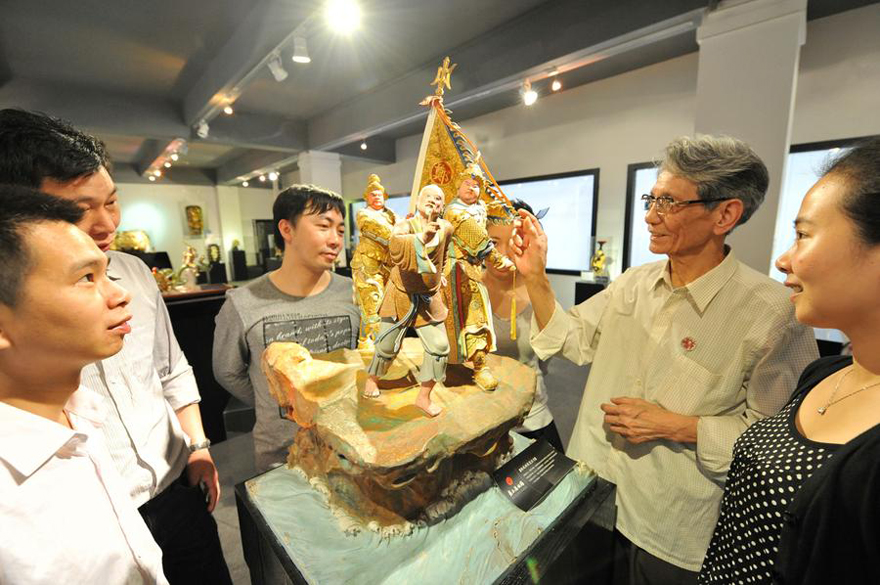 |
|
Handicraftsman Cai Shuikuang (2nd R) introduces a work of lacquer thread sculpture created by his father to his apprentices in Xiamen, Southeast China's Fujian province. Cai Shuikuang is the 12th generation disciple of Cai Lacquer Thread Sculpture, which has a history of more than 300 years and has been listed as the state-level non-material cultural heritages in China. [Photo/Xinhua]
|
The Cai family has been dedicated to this for 13 generations and is recognized for its leadership in the craft. The family brought the skill to new heights in each respective age. Cai Wenpei, Cai Shuikuang and Cai Shidong were the most prominent of the 11th, 12th and 13th generation of heirs. In Xiamen, a museum established by the Cais showcases the history, production process and classic artworks of lacquer thread sculpture.
Fujian is rich in camphorwood, a lustrous wood of even texture and a prime material for carving. The carved body is polished several times since lacquer threads must be attached on a very clean surface. Artisans first apply a mixture of fine soil and gelatin over its surface to fill in any small cracks in the wood. Second, they wrap the figure in cotton or silk and lacquer it. This protects the wood from rot and deformation. The cloth used must be cut into strips so that uneven surfaces can be closely sealed. The silt and gelatin mixture is applied again before the body is finally finished with sand paper. The smoother the surface is, the brighter the lacquer decorations will be.
We Recommend:
